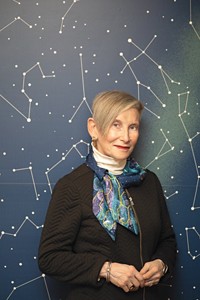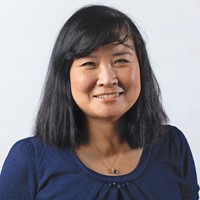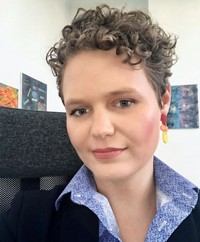Advertisement
Grab your lab coat. Let's get started
Welcome!
Welcome!
Create an account below to get 6 C&EN articles per month, receive newsletters and more - all free.
It seems this is your first time logging in online. Please enter the following information to continue.
As an ACS member you automatically get access to this site. All we need is few more details to create your reading experience.
Not you? Sign in with a different account.
Not you? Sign in with a different account.
ERROR 1
ERROR 1
ERROR 2
ERROR 2
ERROR 2
ERROR 2
ERROR 2
Password and Confirm password must match.
If you have an ACS member number, please enter it here so we can link this account to your membership. (optional)
ERROR 2
ACS values your privacy. By submitting your information, you are gaining access to C&EN and subscribing to our weekly newsletter. We use the information you provide to make your reading experience better, and we will never sell your data to third party members.
Safety
Movers And Shakers
Hog farms and high-energy physics—how are they similar? C. J. Backlund talks about safety
Careful listening, critical thinking, and trust are key to safe work environments, she says
by Jyllian Kemsley
October 4, 2022
| A version of this story appeared in
Volume 100, Issue 36

Industrial hygienist Cynthia Jean (C. J.) Backlund started her career evaluating hazards that hog farmers face when working in swine-confinement buildings. She next worked for the Iowa Occupational Safety and Health Administration’s Consultation Program. There, she identified hazards and provided compliance advice in multiple industries—meatpacking, construction, foundries, and manufacturing, including chemical production.
Today she works as an environment, safety, and health (ES&H) coordinator at Sandia National Laboratories, where she has supported projects as varied as high-energy physics, renewable energy, and biosciences. In October 2020, Sandia promoted her to Distinguished staff member, which the organization says is an honor given “a select group of employees who have distinguished themselves in their careers.” In addition to her work directly supporting safe R&D operations at Sandia, Backlund teaches classes on how to have high-stake conversations, be an influencer, and develop trusting relationships. She has also led the New Mexico section of the American Industrial Hygiene Association and served on several committees at the national level.
Jyllian Kemsley talked with Backlund about some of her most notable projects and the skills she sees as critical for effective relationships between safety and scientific staff. This interview was edited for length and clarity.
Vitals
▸ Home state: Grew up in West Virginia; has lived in New Mexico for nearly 30 years
▸ Education: BS, industrial hygiene, Purdue University; MS, preventive medicine and environmental health, University of Iowa
▸ Professional credentials: Certified industrial hygienist, certified safety professional
▸ Advice to someone considering a career in industrial hygiene: “Please pursue it! We need more people. It takes a curious and investigative mind to look at workplace hazards. And it takes passion to make sure that people go home from work whole, not sick or hurt.”
▸ Hobbies: Golfing, biking, and scuba diving
How did you get interested in occupational safety?
I grew up in West Virginia, and the effects of coal mining are very evident everywhere. They showed up in the economy, the environment, and in workers. I saw firsthand the effects of black lung disease and how it affected families when their fathers and grandfathers had succumbed to the disease or could no longer work in the mines.
I went to Purdue University for my bachelor’s degree, and I wanted to pursue an engineering degree. I also had a passion for human health. And I discovered that there was a bachelor’s degree in industrial hygiene—the art and science of anticipating, recognizing, evaluating, and controlling health hazards in the workplace. I felt like my fate was set there.
I always feel very grateful that I was able to understand early in my education that profession and the value that it would have for the well-being of workers.
Thinking about your experience with those swine operations from your graduate school days, is there anything you learned then that you apply now working in a national laboratory?
I hadn’t thought about that before. But, yes, the big lesson was that it’s imperative that we understand the operation that is going on. I’ll be blunt: farmers were dying in those confinement buildings from inhaling the gases and vapors coming from the waste. I definitely learned how important it is to be able to think critically and talk with the people you’re dealing with to understand what the hazards are. That’s the starting point.
You’ve now spent nearly 3 decades working with scientists in a number of different fields at national labs. How are the safety issues similar from project to project?
The R&D world has unique challenges because it is a dynamic and changing environment. Once the researchers work their project through, they’re going to move on to something else. So you have to stay very engaged with the people I call our customers.
It’s very, very important to understand what the science is that they’re working on so that we can have a reasonable and trusting interaction with them, so we can identify and control the hazards for people to work safely in the environment that they’re in.
You mentioned building trust with your customers. Do you have any tips for how best to do that?
I think the most important thing for the trust equation is that you’ve got to be willing to extend trust to other people.
Right off the bat, I start with, “I trust you. I want you to trust me. And how are we going to keep that trust component in place?” Because if we’re going to get our operation done in an efficient manner, then we have to trust each other. And that is going to show up in four places—your integrity, your intent, your capabilities, and your results. I’m constantly on the lookout when I’m interacting with my customer to see how I’m coming across. Does it look like trust is there? Do I need to pivot somehow to make sure that that stays intact?
Going back to the scientists you’ve worked with in various fields, what are the differences among them?
When I started at Sandia, I supported a unique, high-energy physics operation called the Z machine. It’s a very powerful laboratory radiation source. So I had to be able to talk with the physicists planning the experiments—along with the crew that went in to set up the experiments.
Then I went into supporting geoscientists. That’s a whole different field, and they’re working in places like the North Slope of Alaska and at a turbine operation in Texas. I have to understand what the challenges are in those various environments—including dealing with polar bears on the North Slope.
It helps to have a technical background. I find that when I’m talking with scientists, I’m in a kind of translation mode. They’re excited to tell me about the science that they’re doing, and I’m supercurious about it. I’m also translating it into what it means for safety and how I’m going to advise them about the hazards they may be dealing with.
What was your favorite project?
In 1995, I was a consultant on a project with the US Agency for International Development [USAID]. It revolved around a copper smelter in Romania. I was bringing industrial-hygiene-monitoring equipment and teaching government and smelter staff how to calibrate and use the equipment. Our part of it was to empower those professionals to evaluate their own workspaces.
For a copper smelter, the two main issues are lead and sulfur dioxide. Not only were the workers getting exposed to those things, but the community was getting exposed to them as well. The soil of the town next to the smelter was terribly contaminated with lead. And the children in that town had lead in their systems. There were others from USAID who were working with the community around how to mitigate exposure. And another team was working on trying to stop the environmental contamination. So it was really fascinating to me to be on this project, seeing all those aspects. I felt like we made a difference.
What would you say has been your most challenging project?
I’ll point to the Z machine. They don’t do an experiment—or shot—every day, but it’s got to be over 200 a year. So you have that team that comes in and sets up the target in a confined space. Then that target gets hit with electrical pulses.
When they do the shot, everybody’s out. But there can be residual chemicals and metals that create exposure hazards when the team goes in to set up the next shot. We had to keep a constant eye on what was going on in that section, making sure we could support them and protect them.
One of the wins that we got was installing an additional ventilation system for certain shots so that they could ventilate that space and set up a new shot faster.
What did your promotion to a Distinguished member of staff mean to you and the broader safety program at the lab?
The immediate response is that you’re a combination of feeling humbled and honored by getting the special appointment. Once you get over that initial emotion, you realize that you can bring more to Sandia and be more impactful to help meet its mission.
Having environmental, safety, and health professionals at the level of distinguished elevates both our status and the expectation of how we’re going to deliver and support our customers. It validates the importance of ES&H at Sandia—not just the industrial hygienists but also our safety engineers, our fire protection engineers, and our environmental professionals.
We’re influencers and, hopefully, we’re change agents. We’ve got to get innovative, we’ve got to get creative so that we can do it efficiently and safely.

A version of this story first appeared in ACS Chemical Health & Safety: cenm.ag/backlund.





Join the conversation
Contact the reporter
Submit a Letter to the Editor for publication
Engage with us on Twitter